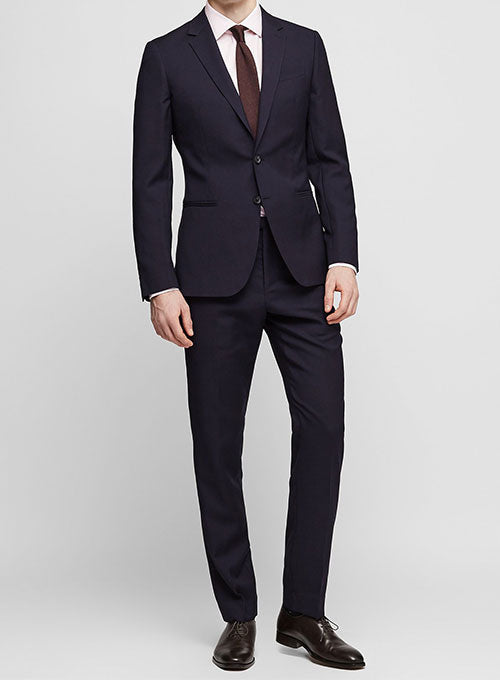Tailored Suits Perth: Boost Your Style with Custom Suits
Tailored Suits Perth: Boost Your Style with Custom Suits
Blog Article
Understanding the Tailoring Process: From Fabric Option to Final Suitable for the Ideal Wardrobe
The tailoring process is a complicated interplay of art and science, beginning with the critical choice of fabric selection and culminating in the precise changes of last fittings. Each material kind brings one-of-a-kind top qualities that influence not just the aesthetic allure however additionally the garment's long life and suitability for numerous celebrations. Recognizing the nuances of customizing techniques can raise one's closet to unmatched degrees of refinement. As we explore these components further, one should think about just how also the smallest information can dramatically influence the overall result of one's personal design.
Value of Fabric Choice
Choosing the appropriate textile is crucial in the tailoring procedure, as it directly affects the convenience, longevity, and overall visual of the last garment. The choice of textile sets the structure for the garment's efficiency, performance, and style. Various materials possess distinct residential properties, such as breathability, stretch, and weight, which can substantially influence how the garment drapes and fits the body.

A customized item made from a suitable material not only showcases workmanship yet also raises the wearer's self-confidence. As a result, recognizing the nuances of textile selection is extremely important for any kind of customizing undertaking. It makes sure that the end product not only meets the visual desires of the customer but likewise straightens with functional requirements, thus accomplishing an unified balance in between form and feature in the customized closet.
Kinds of Fabrics and Their Usages
Recognizing the various kinds of materials offered is crucial for making educated decisions during the tailoring procedure. Each material has special characteristics that dictate its viability for specific garments and events.
Its adaptability permits it to be tailored into everything from t-shirts to gowns. Its natural elasticity assists garments maintain shape over time.
Silk shows high-end and is lightweight, making it best for eveningwear and delicate blouses; nevertheless, it calls for cautious handling because of its frailty. Linen, with its textured finish, is a popular choice for warm climates, giving a crisp and ventilated feeling, yet it wrinkles conveniently, which might impact the garment's appearance.
Artificial fabrics, such as polyester and nylon, offer sturdiness and resistance to creases, making them ideal for everyday wear and active apparel. Understanding these material kinds and their properties permits better decision-making, making sure that each tailored piece not just fits well however also aligns with the designated purpose and occasion.
The Tailoring Strategies Discussed
The art of customizing relies upon a selection of strategies that change material into well-fitted garments. Central to this procedure is pattern drafting, where a tailor produces design templates based on the customer's measurements and preferred design. This initial step ensures that the garment will certainly fit the user appropriately prior to any reducing occurs.
As soon as patterns are established, cutting methods enter into play. Precision is critical as errors can result in misfitting garments. Tailors commonly make use of different cutting approaches, such as single-layer reducing for complex layouts and multiple-layer reducing for effectiveness on typical patterns.
Basting is one more vital method, enabling tailors to briefly stitch material assemble for a preliminary fitting (tailor suits perth). This technique uses the possibility to assess the drape and general silhouette before final sewing
Seaming methods, including flat-felled seams and French seams, enhance the garment's view website resilience and visual appeal. Tailors also employ techniques such as interfacing and cushioning to provide structure and shape to specific locations, like collars and shoulders.
Finally, completing methods, consisting of hemming and edge ending up, ensure the garment's longevity while supplying a refined find out this here look. With each other, these strategies develop the foundation of efficient customizing, leading to beautiful, tailor-made garments.
Fitting Adjustments and Considerations
After the initial customizing strategies have been applied and the garment is constructed, fitting changes come to be paramount to attaining the excellent fit. These modifications attend to numerous aspects of the garment, guaranteeing it contours to the user's physique and boosts general look.

The increase of trousers is an additional critical factor; it should sit easily above the hips without triggering discomfort, enabling simplicity of motion. Hemming lengths for both trousers and skirts need to mirror the wearer's favored design while valuing percentages.
In addition, focus should be provided to the rear of the garment, making sure that there are no unattractive pulls or excess textile - top tailor perth. Each change ought to be meticulously considered, as also small modifications can dramatically affect the overall fit and visual of the customized item, eventually causing a wardrobe that emanates confidence and refinement
Keeping Your Tailored Garments
Proper upkeep of tailored garments is necessary to preserving their fit and appearance over time. To make sure long life, normal cleansing is vital. Constantly follow the treatment label guidelines, which might suggest completely dry cleansing for delicate textiles or device cleaning for even more resilient products. Stay clear of regular laundering, as this can put on down the textile and change the garment's shape.
Storage space is similarly vital; usage cushioned hangers for jackets and coats to maintain shoulder framework, and store pants folded nicely or hung to avoid creasing. Protect garments from direct sunshine, which can fade shades and damage fibers.
In addition, periodic assessments for minor repair work can protect against bigger problems. Check for loosened switches, tearing joints, or signs of moth damage, addressing these issues without delay to maintain the garment's honesty.
Finally, consider seasonal turning. Wearing tailored pieces in small amounts enables textiles to recuperate, extending their life-span. By executing these maintenance techniques, you can make sure that your customized garments stay as excellent as sites the day you first wore them, enhancing your optimal wardrobe for several years to find.
Conclusion
The customizing procedure, incorporating fabric choice, competent methods, and accurate fitting changes, plays a critical role in producing garments that improve both comfort and design. Recognizing the significance of upkeep expands the life of customized garments, strengthening their worth in a well-curated closet.
Report this page